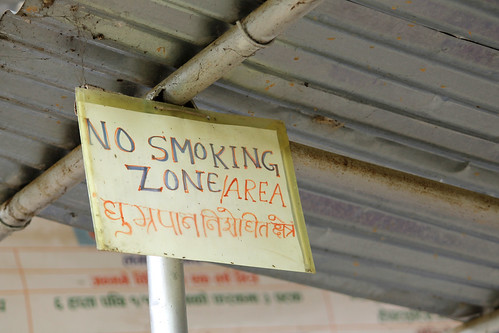By Amrit Banstola and Ashik Banstola
In Nepal, tobacco products are smoked, inhaled, chewed, and sucked in many different forms. All forms of these tobacco products seriously damage health. In a situation where the country is undergoing a shift in burden from infectious diseases to chronic diseases, Non-Communicable Diseases [NCDs] caused by tobacco are increasingly outstripping the conventional cause of mortality related to acute infectious diseases.
Nepal signed the WHO Framework Convention on Tobacco Control on 3 December 2003, ratified on 7 November 2006, implemented on 5 February 2007, and passed the comprehensive tobacco control law in 2011. It includes bans on smoking in public places, bans on advertising, promotion and sponsorship and provision of smoking cessation. Recently, Nepal also implemented 75% pictorial health warnings on all tobacco products. From May 15, 2015, it increased this proportion of health warning to 90%. Indeed, all of these are significant steps towards combating tobacco-related diseases.
At the moment, however, there is no action being taken for the prohibition on the visible display of tobacco products at the Point of Sale (PoS) in Nepal. In Nepal, almost 19% of adults aged 15-69 years currently smoke tobacco daily, and over 84% of these smokers smoke over six manufactured cigarettes daily on average. The PoS of most of these manufactured cigarettes and other tobacco products include small shops, street vendors, teashops and cafes. Across the country, tobacco POS can be seen on footpaths and at bus stops along the highways where most buses stop for snacks.

Image credit: World Bank Photo Collection/Flickr CC BY-NC-ND
Research shows that PoS displays have a direct impact on young people’s smoking. A study conducted in the UK on adolescents’ perceptions on tobacco control measures shows that PoS displays encourage smoking and are considered ‘cool, fun, and attractive’. A New Zealand study published in Tobacco Control (2009) provides evidence that exposure to tobacco displays at the point of sale significantly increases youth smoking. Studies from Australia and USA suggests that the display of cigarettes at the PoS creates a perception that cigarettes are easily accessible, available and also help young people remember brands and may aid in the popularity of products. PoS displays are often considered as a promotional tool in its own right. Young people who makes spontaneous choices and ex-smokers are vulnerable to this silent marketing campaign.
Studies from Ireland, Norway, and Australia have shown the effectiveness of a ban on the display of tobacco products at the point of sale. A study on the evaluation of the removal of point-of-sale tobacco displays in Ireland shows an immediate compliance of 97%. According to this study, there was a decrease in the proportion of young people believing more than a fifth of youth of their age smoked from 62% to 46%. Similarly, post-legislation, 38% of teenagers thought the law would make it easier for children not to smoke.
There is an urgent need to prohibit on the visible display of tobacco products at the point of sale in Nepal.
Competing interests: None declared.
Amrit Banstola is a Global Student Award Scholar at the University of the West of England, UK and founder of Public Health Perspective Nepal.
Ashik Banstola is a PhD Fellow at University of Otago, New Zealand and an Executive Director of Public Health Perspective Nepal.